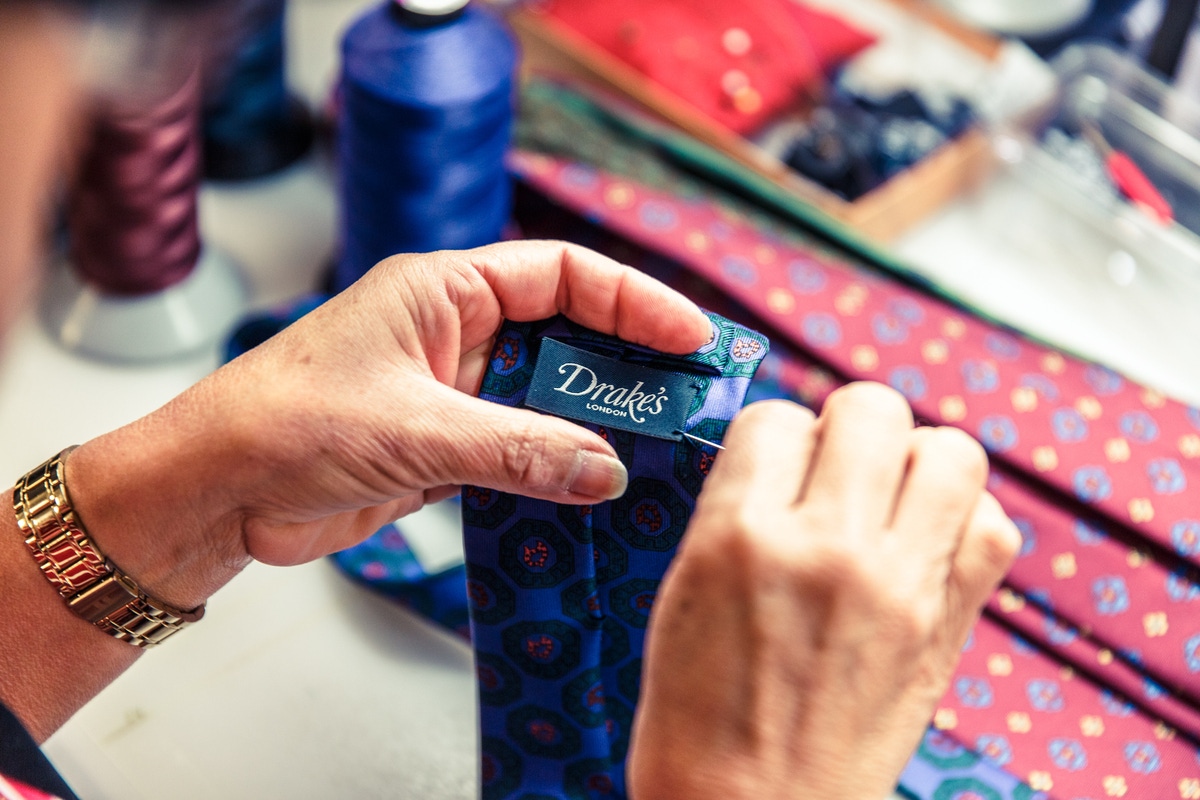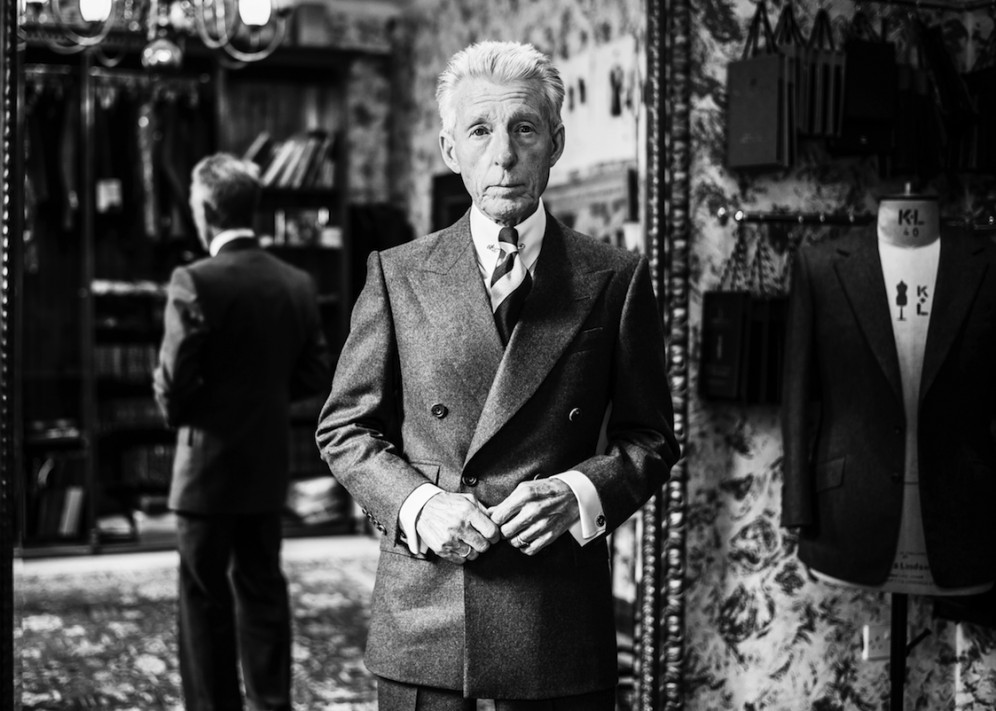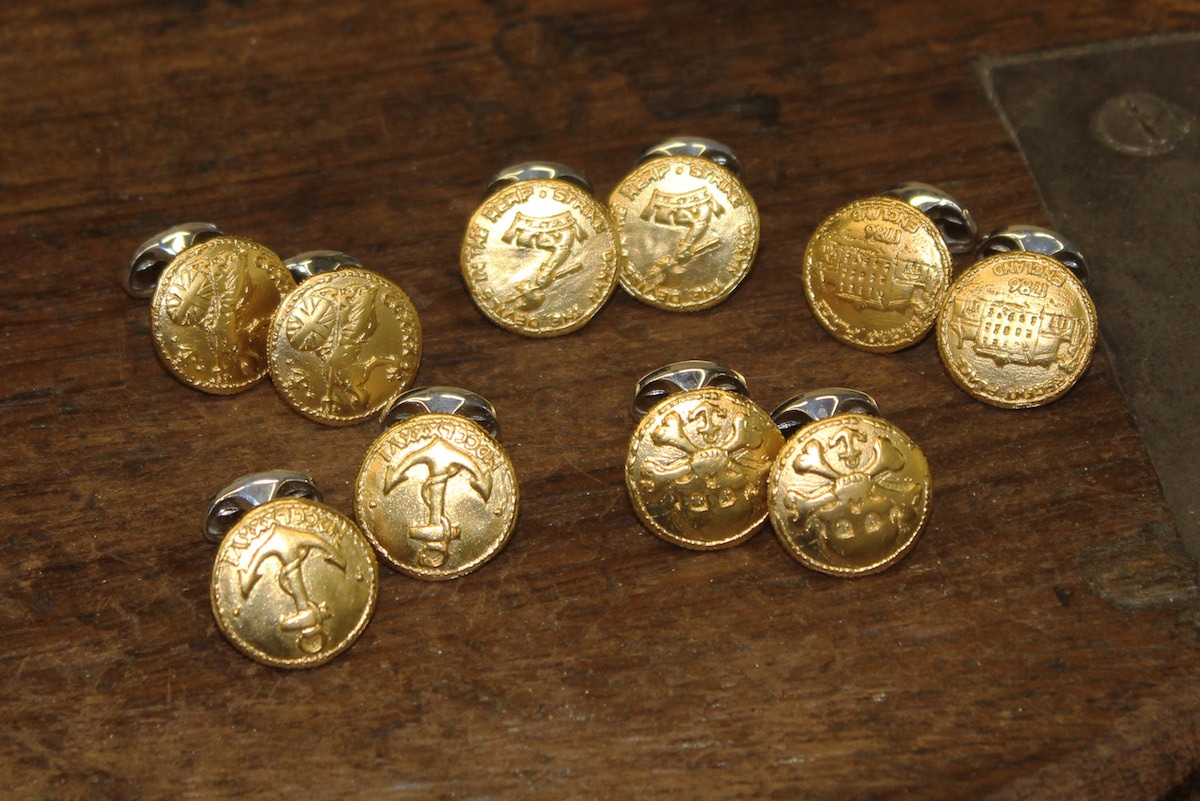Fumagalli 1891: 'Stile e Passione, Arte e Cultura'
Founded during the Belle Epoque in Milan and today based in Italy’s picturesque lakeside silk mecca of Como, Fumagalli 1891 is the oldest continuously operating tiemaker in Italy.

Fumagalli 1891 got its start in the late 19th century under the guidance of founder Attilio Fumagalli, whose family had a rich history in fine textiles. Initially producing luxurious silk dressing gowns and handmade ties in airy silk gauze (the specialty of Atilio’s mill-owning father, Germano Fumagalli, who was a pioneer of ‘English Gauze’ weaving in Italy), in those early days customers would visit the workshops at Via Sirtori, commission a tie from the archive of cloth samples, and watch in rapt appreciation as it was created from scratch.
In the post-war years, the next generation of family helming the company, Alberto and Mario Fumagalli, developed what they called ‘Gold Twill’ — a patented process of printing that resulted in remarkably vibrant colours, crisp definition of patterns and motifs, while keeping the silk twill cloth soft and supple. With the brand’s prestige growing during the intervening decades, in 1981, Paolo Fumagalli, the nephew of founder Attilio, met menswear entrepreneur Guido Delli Fiori — the two became partners, expanding the market for Fumagalli’s products and moving the headquarters to a grand villa in historic silk hub, Como. Here, Guido’s son Roberto Delli Fiori, the CEO moving the brand forward into the 21st century, explains to The Rake what sets this storied artisanal accessories house apart.
What qualities and attributes distinguish your ties from others’? What makes a Fumagalli tie unique?
I believe that not many people recall the true story of the tie. Probably we — as the oldest tiemaker in Italy, after 125 years in the market — can really tell many things about it. But that is not enough. Research is the keyword. Every fabric, each design is being created exclusively, and finishing is also outstanding. All these hallmarks make a Fumagalli tie stand out. Not to mention the fact that our products come with exclusive and innovative packaging boxes — which are proudly made in Italy, like anything bearing the Fumagalli brand.
Could you explain the company slogan, Stile e Passione, Arte e Cultura?
One day a customer asked me, “Your products and your brand are beautiful, I fell in love with Fumagalli, but some of your biggest competitors look similar to you. Their fabrics are comparable to yours, they use hand stitching too, so what really distinguishes you from them?” At that time I was not able to provide a proper answer. Today I can. I think it is art, history and culture. Whoever comes to our offices and sees our cultural and artistic heritage will be impressed and emotionally involved from our charming retro style. This is a legacy that my family has left us. We Italians are a people of artists, navigators and painters. What, if not art and culture, is it that distinguishes Italy and Italians from the rest of the world?





You are based in Como — what exactly does this location bring to the business and your products?
First of all, Como is one of the most gorgeous cities in the world. When I wake up every morning, I can see our wonderful lake surrounded by mountains… Well, I think that we are lucky enough to have all this. Beauty is always the source of inspiration. Moreover, the textile district of Como and the excellence of its products are the outcome of centuries of experience and this is surely the best, too. Being part of this world is doubtless an advantage and it is also a benefit for us to work closely with our suppliers and establish strong partnership relationships with them.
What’s your philosophy, plan or strategy for taking the business forward?
Style and passion, art and culture. This might sound a bit repetitive, but these core values remain what drives us into the future. Design and innovation are timeless signs, whilst ‘social’ and ‘storytelling’ are other up-to-date keywords.
How do your archives affect your new designs? Do you refer often to examples from the company’s past?
Our historical archives are and will be in the future, too, a major source of inspiration when we create our seasonal collections. We choose and rework the collection’s patterns and fabrics, innovating but maintaining at the same time the tradition of our Italian style.
Tell us about the Fumagalli 1891 products that you are offering on TheRake.com. What is special about them?
Insofar as ties go, our choice fell upon five-fold untipped ties, a must-have for modern and refined gentlemen. The pocket squares, meanwhile, tell a story of a far-off land, with amusing patterns from India.
Finally, what are the three things a man should look for in a good tie?
Touch – touching the materials and ‘listening’ to them are the basis to enjoy a sensory experience and immediately perceive high quality in a tie. Lines – tailoring and hand-sewing mean top class quality, hence a comfortable and long lasting garment. Sight – style and design must have a classic appeal, but reviewed to stay in step with modern styles.


 Fumagalli 1891's patterned scarves.
Fumagalli 1891's patterned scarves.



